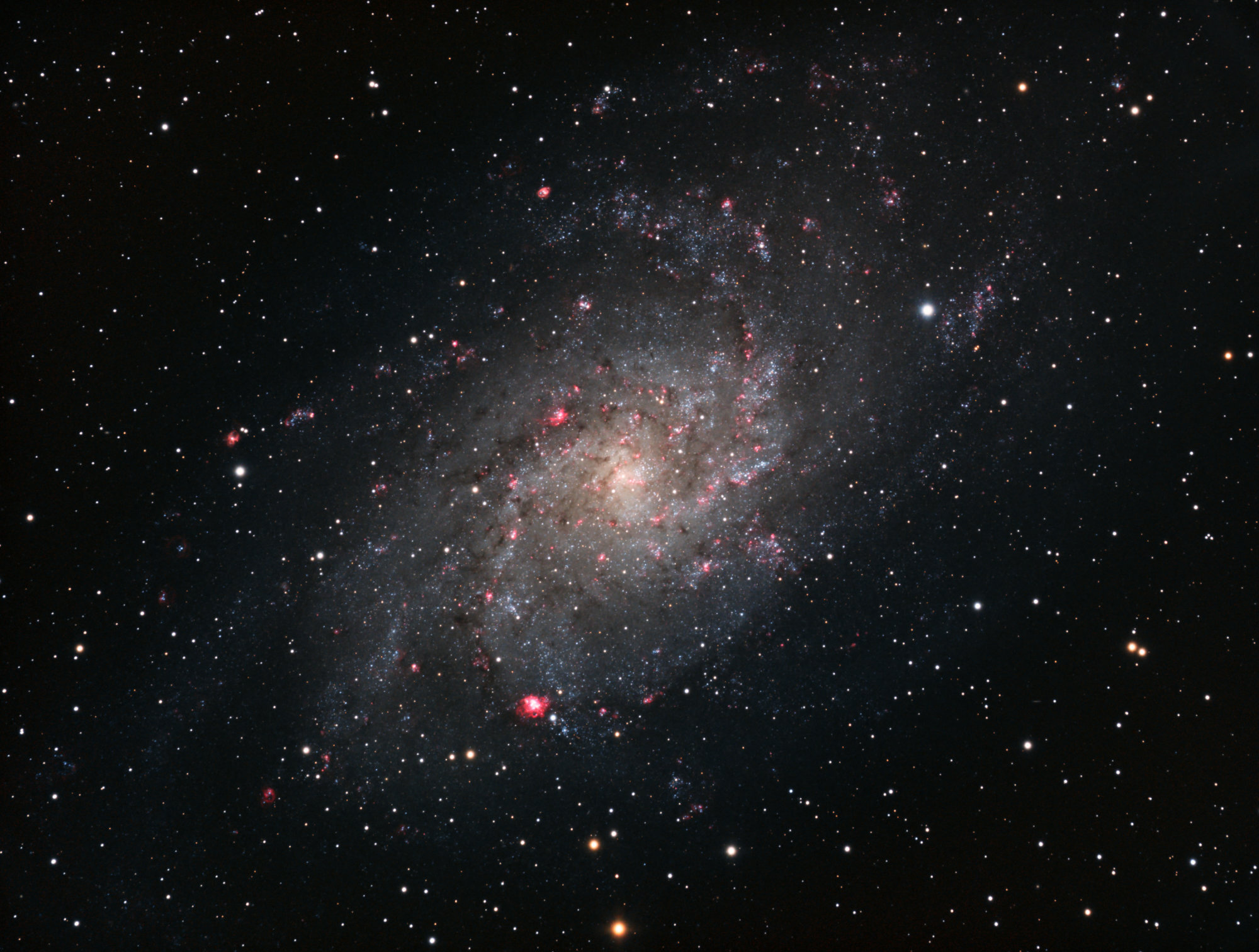
Images
Caldwell 45
Caldwell 45 is a small galaxy in the constellation Boötes, art of the Virgo supercluster of galaxies. It is also known as NGC5248. This was an older dataset when processed, and calibration is not perfect, as is visible in the uneven background. But details in the galaxy have been fairly well capture.
Caldwell 44 - Superman Galaxy
First light with the ZWO ASI533MM camera. The small square sensor makes it a perfect tool to capture the small but beautiful barred spiral galaxy NGC7479, also referred to as the Superman Galaxy
Sh2-252 - Monkey Head Nebula
The Monkey Head Nebula is a very nice narrowband target for when the moon is out. Located in the constellation of Orion, this is a typical winter target. While clouds interfered a lot with the imaging, over several nights about 7h of exposure could be gathered for this image.
Sh2-174 - Valentine Rose
Sh2-174 is a very faint planetary nebula and also known as Valentine Rose. In total 12h of H-alpha and OIII data was collected to create this final image.
M1 | Sh2-244
The Crab Nebula is a supernova remnant and pulsar wind nebula in the constellation of Taurus. Imaged here in a Hubble Palette. This is the first image using BlurXTerminator for deconvolution, which is nothing short of a revolution in PixInsight image processing.
Sh2-236 - Tadpoles Nebula
The Tadpoles nebula is a very characteristic nebula in the constellation Auriga. This narrow-band image in Hubble palette clearly shows where this emission nebula gets its name from.
NGC7789 - Caroline’s Rose
NGC 7789 is an open cluster in Cassiopeia that was discovered by Caroline Herschel in 1783. She was the sister of the well known William Herschel. When looking at this object visually the loops of stars and dark lanes give the impression of a rose, that’s what gave it the nickname Caroline’s Rose.










